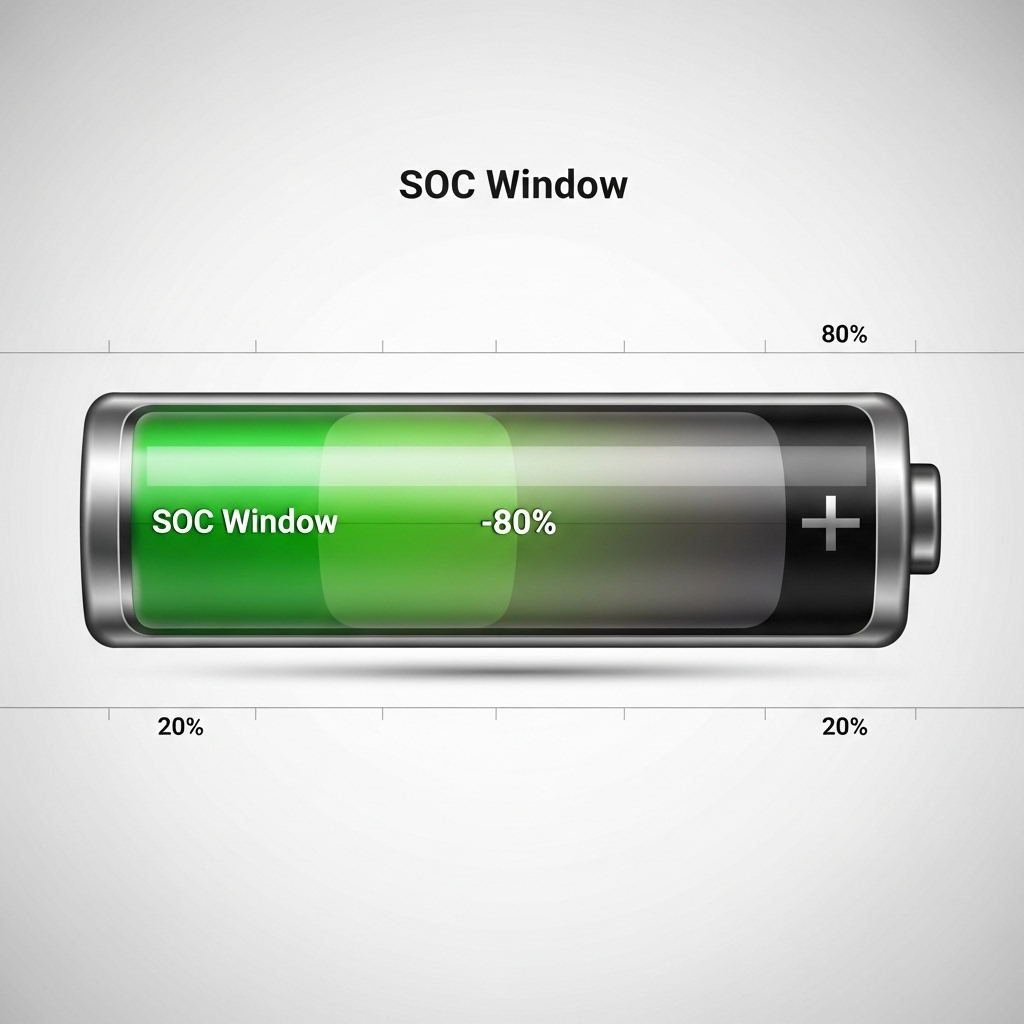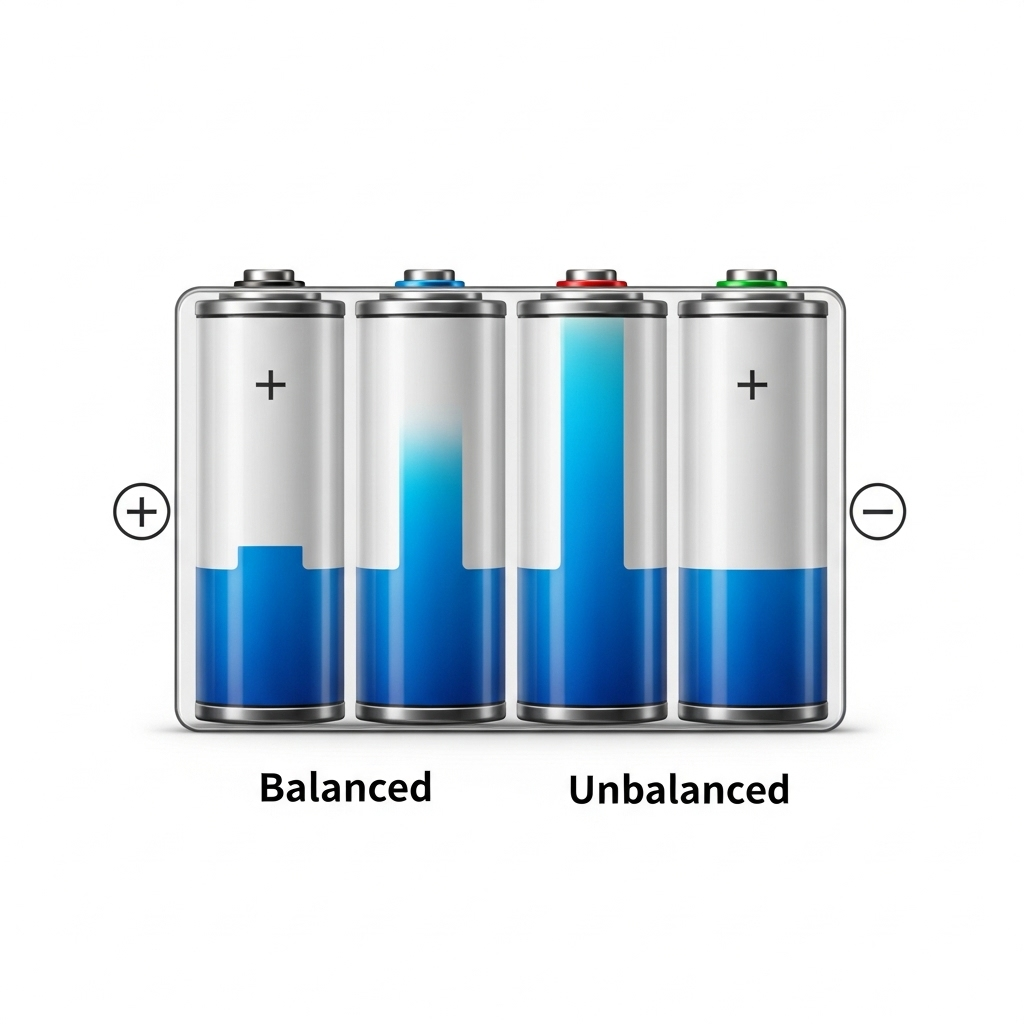You have invested in a battery storage system for energy independence and peace of mind. But how you manage its daily charge and discharge levels—its State of Charge (SOC)—directly impacts its lifespan and your readiness for an outage. Setting the wrong daily SOC limits for backup is a frequent error that can lead to premature battery degradation and a system that fails when you need it most. This article outlines seven critical mistakes to avoid, helping you protect your investment and ensure reliable power.
Mistake 1: Pushing the Battery to Its Absolute Limits
It seems logical to use every bit of your battery's capacity. However, consistently charging to 100% and discharging to 0% puts significant stress on the battery's internal components, particularly with lithium-ion chemistries like LiFePO4 (Lithium Iron Phosphate).
Consistently Hitting 100% SOC
Keeping a LiFePO4 battery at a 100% state of charge for extended periods accelerates calendar aging. This type of degradation happens even when the battery is not in use. High voltage levels increase the rate of chemical side reactions inside the cells, permanently reducing capacity. Instead of aiming for 100% daily, a target of 85-90% is often a healthier ceiling for routine charging.
Frequently Discharging to 0% SOC
Deeply discharging a battery is even more detrimental. Dropping to very low SOC levels can cause irreversible damage and significantly shorten its cycle life. A battery rated for 6,000 cycles might only last 3,000 if it is regularly drained completely. Establishing a lower limit, or floor, of 15-20% preserves battery health and provides a buffer.
Mistake 2: Setting an Inadequate Backup Reserve
The primary purpose of a backup system is to provide power during a grid failure. Many users make one of two errors: setting the reserve too low or too high.
Setting the Reserve Too Low
A low reserve, for instance, 10%, might seem sufficient for a brief outage. But what if the power is out for 24 hours or more? A small reserve may only power your critical loads—like a refrigerator and a few lights—for a couple of hours. You risk being left in the dark. You should calculate your emergency power needs based on the essential appliances you cannot live without and the typical duration of outages in your area.
Setting the Reserve Too High
Conversely, an excessively high reserve, such as 50% or more, unnecessarily limits the amount of battery capacity available for daily use. This reduces your ability to self-consume solar energy or take advantage of time-of-use electricity rates. It diminishes the financial return of your system. The key is finding a balance that ensures security without crippling your daily savings.
Mistake 3: Ignoring the Inverter's Critical Role
Your battery doesn't operate in a vacuum. The inverter is the brain of the system, managing the flow of energy between your solar panels, battery, home, and the grid. Ignoring its settings is a recipe for poor performance.
Mismatched Inverter and Battery Settings
You might set a 20% reserve in your battery's management system (BMS), but if the inverter is programmed to discharge until the battery hits 10%, the inverter's setting will win. This conflict can unknowingly push your battery beyond its intended limits. Ensure your inverter's charge and discharge parameters are perfectly aligned with your desired SOC window for longevity. As noted in a report by the International Renewable Energy Agency, Grid Codes for Renewable Powered Systems, the controllability of active and reactive power by inverters is fundamental to system operation, which includes managing battery SOC.
Mistake 4: A 'Set It and Forget It' Approach
Your energy needs and solar production are not static; they change throughout the year. A single SOC strategy is rarely optimal for all four seasons.
Failing to Adapt to Seasonal Changes
In the summer, with long, sunny days, you can afford a wider daily SOC window (e.g., 20% to 90%) for maximum self-consumption, as your battery will likely recharge fully each day. In the winter, when solar generation is lower and the risk of storm-related outages may be higher, a more conservative approach is wise. You might raise your backup reserve to 30% or 40% to guarantee more power is available for emergencies.
Mistake 5: Applying Electric Vehicle Logic to Home Storage
While both use lithium-ion batteries, the operational goals for an electric vehicle (EV) and a home energy storage system are different. Applying EV charging habits to your home backup can be a costly error.
Prioritizing 'Range' Over Longevity
EV owners often charge to 80% for daily driving but will charge to 100% for a long trip to maximize range. This is an occasional event. For a home system that cycles daily, treating every day like a 'long trip' by charging to 100% accelerates degradation. Home storage prioritizes endurance and lifetime value over single-day maximum capacity.
Mistake 6: Overlooking Key Performance Metrics
Focusing solely on the SOC percentage on your app is a narrow view. True performance is understood through a combination of metrics that are directly influenced by your SOC settings.
Ignoring Depth of Discharge (DoD) and Cycle Life
Depth of Discharge is the percentage of the battery that has been discharged relative to its total capacity. A daily SOC window of 20% to 85% corresponds to a 65% DoD. LiFePO4 batteries have a finite number of cycles, and the depth of these cycles matters. Shallower cycles lead to a much longer life. A comprehensive understanding of solar storage performance shows that managing DoD through smart SOC limits is the most effective way to maximize the number of cycles your battery can deliver.
Mistake 7: Focusing on Upfront Cost Instead of Lifetime Value
An aggressive SOC strategy might seem to maximize your daily use, but it comes at a steep long-term cost: premature battery replacement. A battery is often the most expensive component of a storage system.
The Financial Impact of Poor SOC Management
Extending your battery's life by several years through conservative SOC management provides a far greater return than the marginal daily savings from pushing it to its limits. The International Energy Agency's Harnessing Variable Renewables report underscores the importance of system stability and resource planning, which at a residential level translates to maintaining the health of your assets. A healthy battery is a reliable asset. Consider the following comparison:
| Parameter | Aggressive Strategy (10% - 100% SOC) | Conservative Strategy (20% - 85% SOC) |
|---|---|---|
| Daily Usable Energy | 90% | 65% |
| Estimated Cycle Life | ~3,500 cycles | ~6,000+ cycles |
| Estimated Battery Lifespan | 7-9 years | 12-15+ years |
| Long-Term Cost | Higher (due to earlier replacement) | Lower (maximizes initial investment) |
Disclaimer: This information is for educational purposes only and does not constitute financial or investment advice. The figures above are illustrative. Consult with a qualified professional for your specific system.
Smarter Strategies for Your Backup System
Choosing the right daily SOC limits is a strategic decision. It requires balancing backup preparedness, daily energy savings, and long-term battery health. By avoiding these seven common mistakes, you can configure a system that is not only reliable and resilient but also delivers the best possible value over its entire lifespan. Regularly review your settings, understand your real-world needs, and treat your battery as the long-term investment it is.
Frequently Asked Questions
What is a good daily SOC window for a LiFePO4 battery?
A widely recommended daily operating window for LiFePO4 batteries is between 20% and 85% SOC. This practice avoids the stress of very high and very low voltages, significantly extending the battery's cycle life while still providing substantial usable capacity.
How do I calculate my critical backup power needs?
First, list all essential appliances (e.g., refrigerator, freezer, medical devices, well pump, a few lights). Find the wattage of each. Estimate how many hours per day each will run during an outage. Multiply the wattage by the hours for each appliance to get watt-hours (Wh), then sum them up for a total daily emergency energy need. Add a 20% buffer to be safe.
Should I change my SOC settings for different seasons?
Yes, adjusting your SOC limits seasonally is a smart strategy. In summer, with abundant sun, you can use a wider SOC window for daily cycling (e.g., 20% to 90%) to maximize self-consumption. In winter, consider increasing your backup reserve (e.g., setting a floor of 30% or 40%) to ensure more stored energy is available for potential storm-related outages.
Does my inverter automatically manage SOC for longevity?
Not always. While many modern hybrid inverters have 'longevity' or 'economy' modes, they may not be enabled by default. You must access your inverter's settings, either through its physical interface or a monitoring app, to configure the specific upper and lower SOC limits for charging and discharging. Always verify that these settings align with your goals.





Leave a comment
All comments are moderated before being published.
This site is protected by hCaptcha and the hCaptcha Privacy Policy and Terms of Service apply.